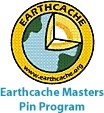
 To reach this lava tube head northwest on Aiken Mine Road
(coordinates) from Kelbaker Road. This is an unpaved road that
is prone to washouts and deep sand. The rangers recommend 4x4
and high clearance. Take the left fork (coordinates) to the
parking area (coordinates). Take a short walk up the 4x4 trail
watching for a hiking trail on your right. Follow the trail up
to the entrance. A small rickety metal ladder is at the second
entrance. Use the ladder at your own risk. It is not secured
and is quite wobbly.
To reach this lava tube head northwest on Aiken Mine Road
(coordinates) from Kelbaker Road. This is an unpaved road that
is prone to washouts and deep sand. The rangers recommend 4x4
and high clearance. Take the left fork (coordinates) to the
parking area (coordinates). Take a short walk up the 4x4 trail
watching for a hiking trail on your right. Follow the trail up
to the entrance. A small rickety metal ladder is at the second
entrance. Use the ladder at your own risk. It is not secured
and is quite wobbly.
Lava tubes form as the surface of a lava flow cools and hardens
forming an insulating cover. Molten lava continues to flow under
it. When the eruption ends, the lava continues out the end of the
tube leaving an empty void under the solid surface. Typically, lava
tubes are sealed on both ends with rock, but in some places the
surface has collapsed creating entrances.
Inside the lava tube are a number of features that are frozen
into the solidified rock. Stone "icicles" hang from the ceiling.
There are ripples along the surface of some of the rocks.
The same insulation that kept the lava hot as it flowed through
the tube keeps the air inside cool. The temperature inside the cave
is refreshingly cool compared to the hot summer temperatures
outside.
Logging requirements:
Send me a note with :
- The text "GC13ET4 Lava Tube of the Mojave Cinder Cones" on the
first line
- The number of people in your group.
- Post a picture of a feature in the cave. Without a picture
describe the feature in the log. Send me a note with a short
explanation on how it was formed.
- Send me a note with a theory as to why the holes in the roof
formed where they did.
The above information was compiled from the
following sources:
- Cinder Cones & Lava Tube, NPS
pamphlet
- Cinder Cones, Geology of Mojave National
Preserve, USGS,
http://www2.nature.nps.gov/geology/usgsnps/mojave/cinder1.html
Placement approved by the
Mojave National Preserve